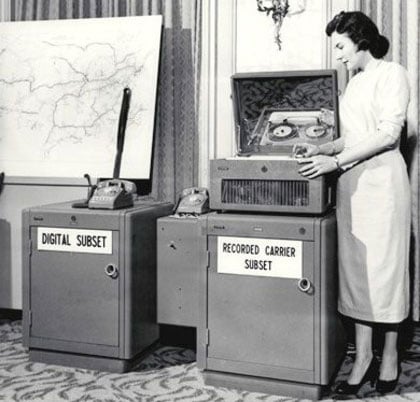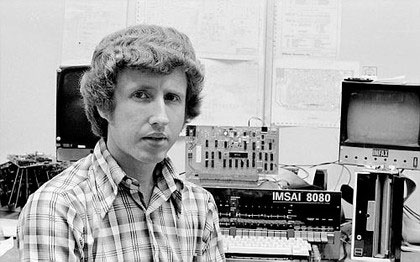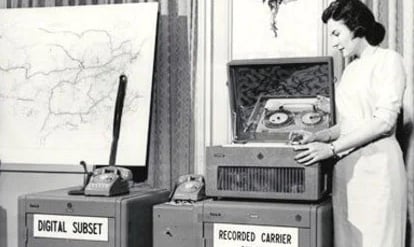
3 Facts About The Modem
- “Modem” is an abbreviation of the device’s function, which is to act as a modulator-demodulator for data signals traversing analog and digital networks.
- As the product evolved, the transfer speeds increased not only because of the actual transfer rate but also because of the protocols used to transfer data. Eventually data compression was used which helped move data faster while not having to increase the bit/s rate.
- The modulator-demodulator was initially used by news agencies to send data faster. Over time it served the United States during the Cold War, and eventually became a household item as computers and the Internet became more popular among society.

Modem History
The earliest types of modems have been around since the 1920s. Back then the main function of a modem was to transmit data types across dedicated telephone lines, mostly used for and by news agencies. Data could be created at one location using a paper punch, transmitted across telephone wires to another location, and printed at that location for the users to view. This was the earliest form of “instant messaging”.
The technology behind modems became more advanced in the 1940s when the United States Air Force determined the modem could be useful in transmitting information during the Cold War. Large quantities of radar images and other data needed to be exchanged across different locations around the globe for the United States to monitor Soviet activity, and work at the Air Force Cambridge Research Center worked to develop a modulator-demodulator as a solution.
Quick Facts
- Created
- The earliest form of a modem in its true sense was created in the 1920’s.
- Creator (person)
- While the concept for the modem had been around since the 1920’s, the first modem made specifically for personal computers was invented by Dale Heatherington and Dennis Hayes.
- Original Use
- The modem has always been used to convert analog data into a digital format, and vice versa.
- Cost
- Different brands and types of modems have been sold throughout the years at varying costs.
By the 1950’s there were modulator-demodulator capabilities at most strategic military locations, including bases and radar stations. By 1959 the first commercial-use modem was available in the Bell 101 modem (of Bell Laboratories, a division of AT&T), which offered 110 bit/s (bits per second).
Just three years later in 1962, the Bell 103 type was offering full-form models with speeds of 300 bit/s, nearly three times the previous model. The Bell 103 modem became the standard, and non-AT&T models were also producing full-form modems to transmit data.
Fast forward to the nineties and that speed grew exponentially from 300 bit/s to 56k, or 56kbit/s. In addition to speeds of 56k different types of protocols were used to compress the data being sent without needing to increase to speed, which transmitted data even faster. Eventually, the modulator-demodulator was used to allow dial-up Internet connections to personal computers at home.

How It Worked
Since a modem is a modulator-demodulator, that’s exactly what it does. Computers use digital data signals, and the telephone lines that data travels along use analog data signals. The device “translates” those signals from computer A to the wire, then at the end of that wire when the data reaches computer B. Modulation alters the waves of data, either by changing the wave’s size or frequency.

Modem: Historical Significance
The device is crucial to the history of civilization over the past century or so. Starting in the 1920s the modem helped societies transfer news at greater speeds than possible before. In the 1940’s and all throughout the Cold War, the modem helped the United States disseminate valuable intelligence and information across military bases, intelligence agencies, and radar sites at breakneck speeds.
By the 1990’s with the release of AT&T’s Bell 103 data signals were being transferred at 56k speeds from computer to computer. Without this device, there’s no telling how data would be transferred today, at what speeds, and what other inventions and services would not have been created or discovered if the modem hadn’t helped make data readily available.

